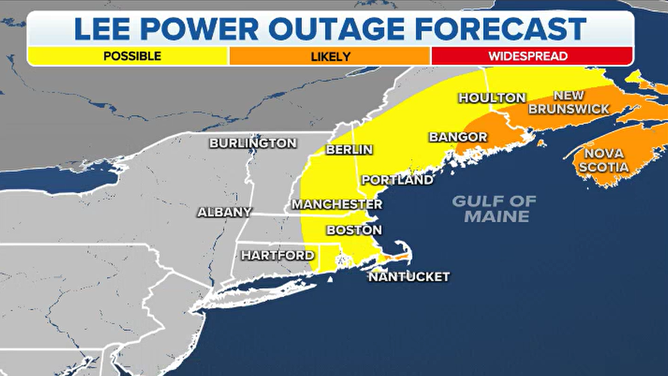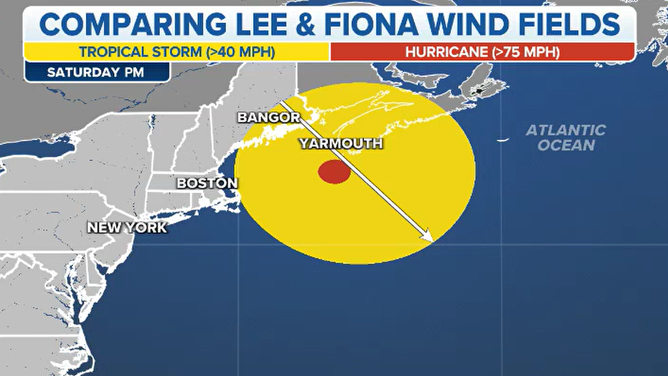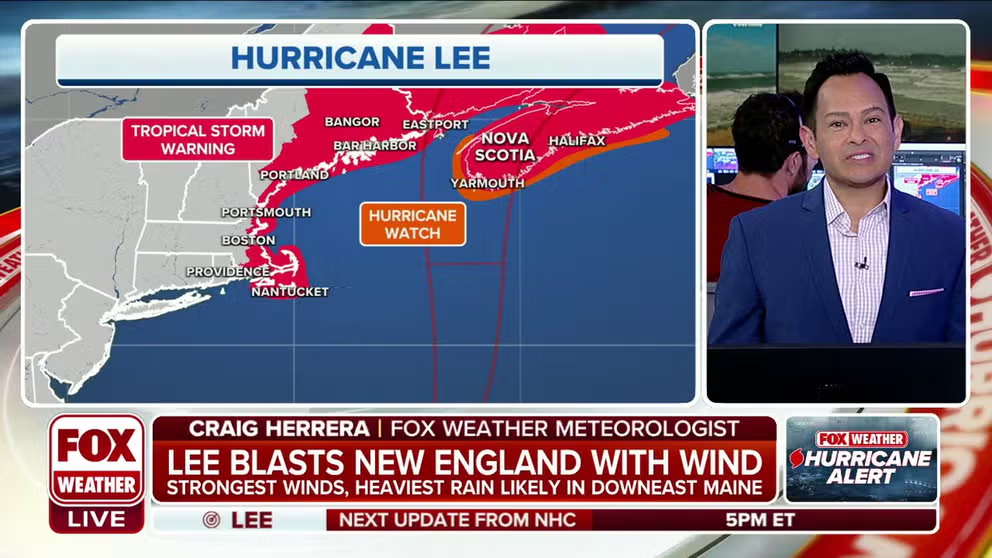Power outages likely in New England from Hurricane Lee
The combination of wet soil and trees that still have plenty of leaves make the situation different from a classic nor’easter when trees are usually bare.
Lee expected to bring powerful wind, large waves to New England
The strongest winds and heaviest rain are likely in Downeast Maine, while rip currents and high surf are likely along the New England coastline. Sept. 15, 2023.
The FOX Forecast Center continues to track Hurricane Lee as it approaches the New England coastline.
Due to the storm’s size, impacts from the once Category 5 hurricane will be felt well outside the cone of concern. Direct impacts are expected to start on Friday and last through the weekend.
Due to the atmospheric conditions at play, the hurricane is expected to be transitioning into a post-tropical cyclone as it approaches the coasts of New England and Canada.
Transitions from a tropical storm system to a feature that is commonly found in the fall and winter are typical in more northern latitudes.
Both Hurricane Sandy (2009) and Hurricane Fiona (2022) transitioned into post-tropical cyclones before making landfall in the U.S. and Canada during their respective years.

Power Outage Forecast
(FOX Weather)
HURRICANE LEE LIVE TRACKER: PROJECT PATH, SPAGHETTI COMPUTER MODELS, CONE OF CONCERN AND MORE
During post-tropical episodes, winds from cyclones are known to spread out, impacting hundreds of miles along with heavy rainfall and storm surge.
Forecast models show the extent of tropical storm-force winds from Lee will extend outwards 250 miles from the center, meaning the powerful storm will be 500 miles wide.
Any wind gust above 57 mph is considered to be damaging, meaning communities underneath a Tropical Storm Watch or Warning could see winds reach the threshold for damage.
Based on estimated wind speeds, Hurricane Lee has the potential to knock out power in half a dozen states from Connecticut to Maine. Power outages are considered likely from Maine through coastal Massachusetts. Boston is considered to be in the possible to likely zone from Saturday morning through early Sunday morning, while a large part of interior New England also faces possible outages.

Wind tropical storm
History of post-tropical cyclones
During Hurricane Sandy of 2009 which made landfall in the Garden State, the Department of Energy’s Office of Electricity Reliability and Delivery estimated 8.5 million customers were without power at some point during or after the storm.
The department estimated 90% of all power was restored within nine days, but some power outages lingered due to flooding.
During the height of the storm, power outages stretched from the Midwest through New England, a much wider area than where Hurricane Lee anticipated to impact.
Despite efforts by some communities to bury power lines, the Department of Energy said that infrastructure was not immune from damage.

Hurricane Sandy impacts
(FOX Weather)
The impacts from Hurricane Fionna on Canada in 2022 caused at least 500,000 power outages, and the post-tropical cyclone was labeled as the strongest storm to hit Nova Scotia and Prince Edward Island.
Similar to Hurricane Lee, the storm impacted the Atlantic coastline in September, when trees are still vulnerable because of all the active foliage.
Some outages lasted more than two weeks, and those hard-hit areas could receive impacts again this year from Lee.
Nova Scotia Power said it is activating its Emergency Operations Centre ahead of the storm.
"Our team has been monitoring Hurricane Lee for several days and using that information to finalize plans, so we’re ready to respond," Matt Drover, Nova Scotia Power’s storm lead, said in a statement. "We are expecting winds to be the biggest challenge with this storm, both from a safety standpoint and impact on our equipment. We are taking every precaution and will be ready to respond as safely and efficiently as possible."
